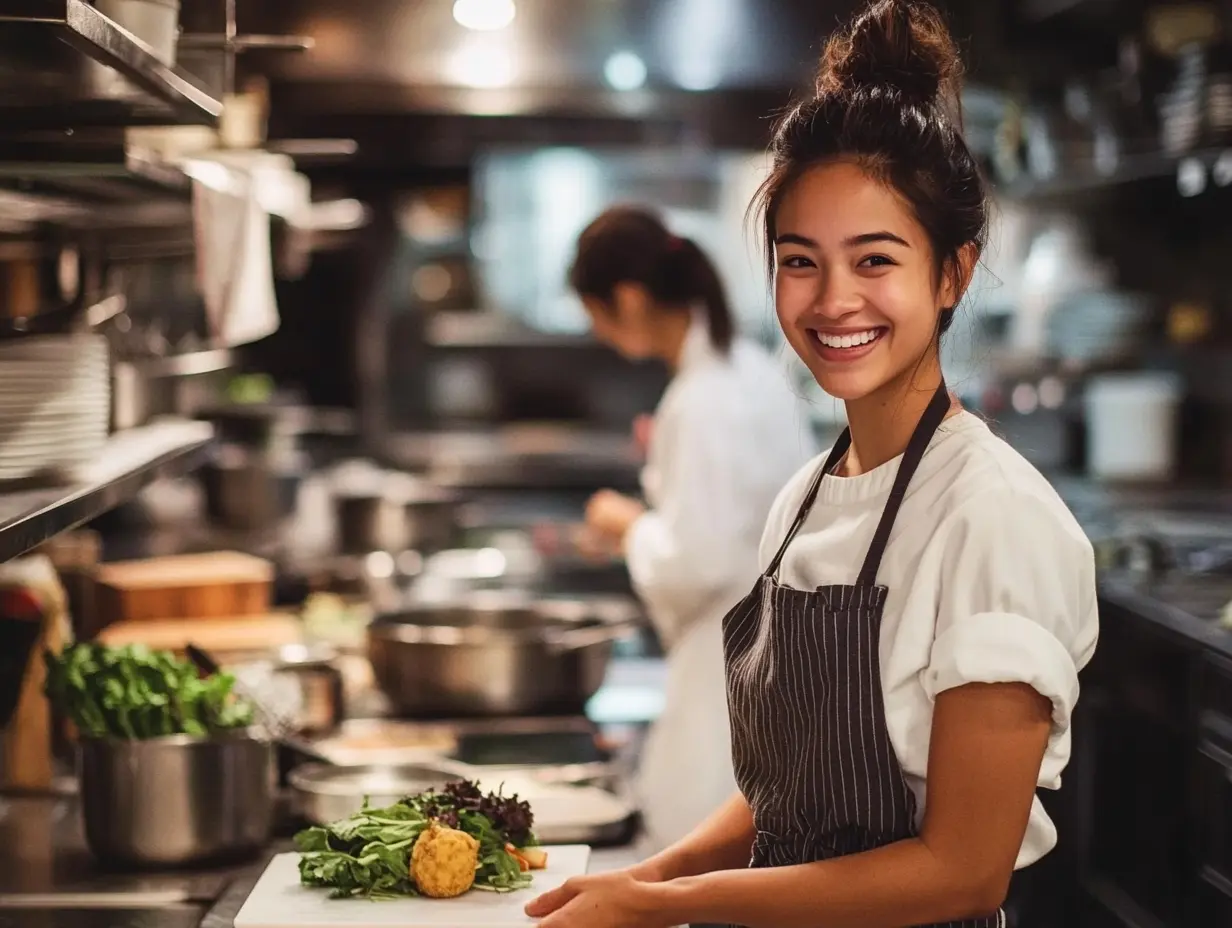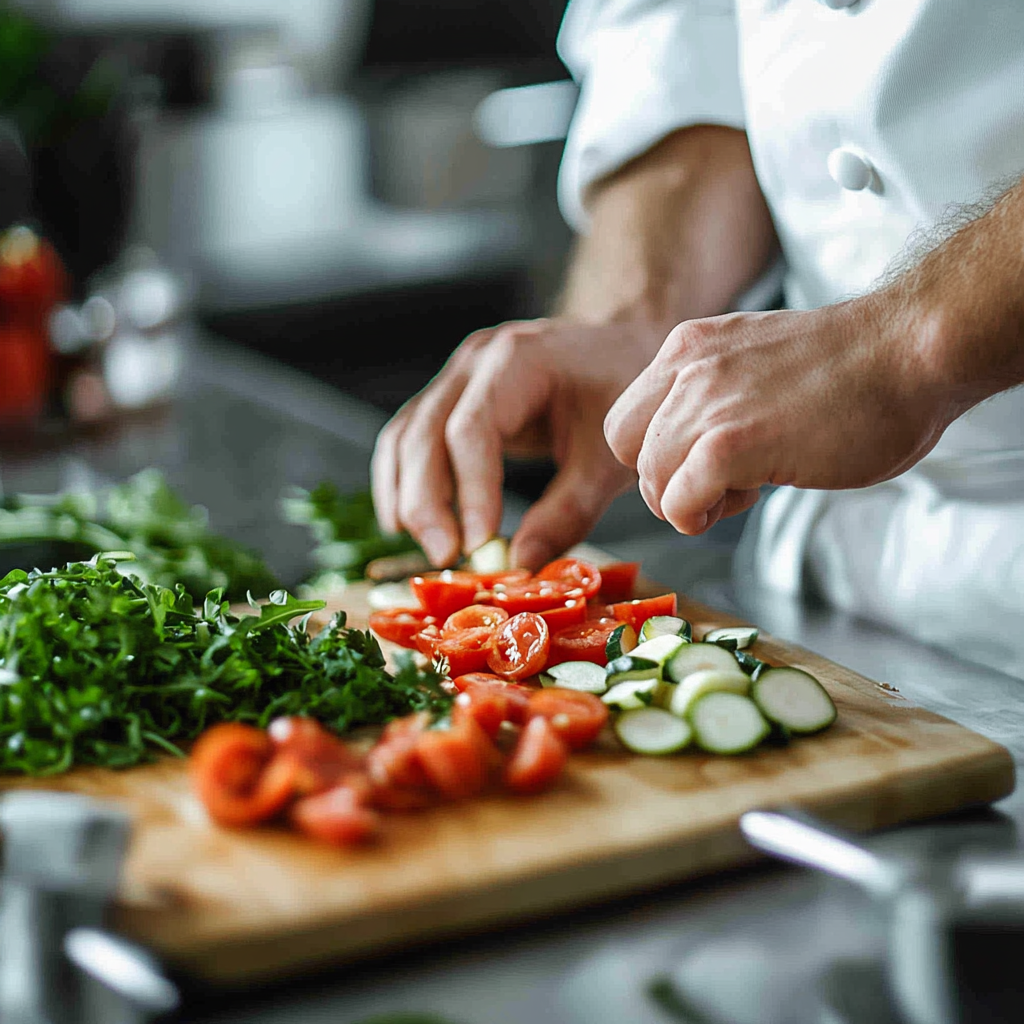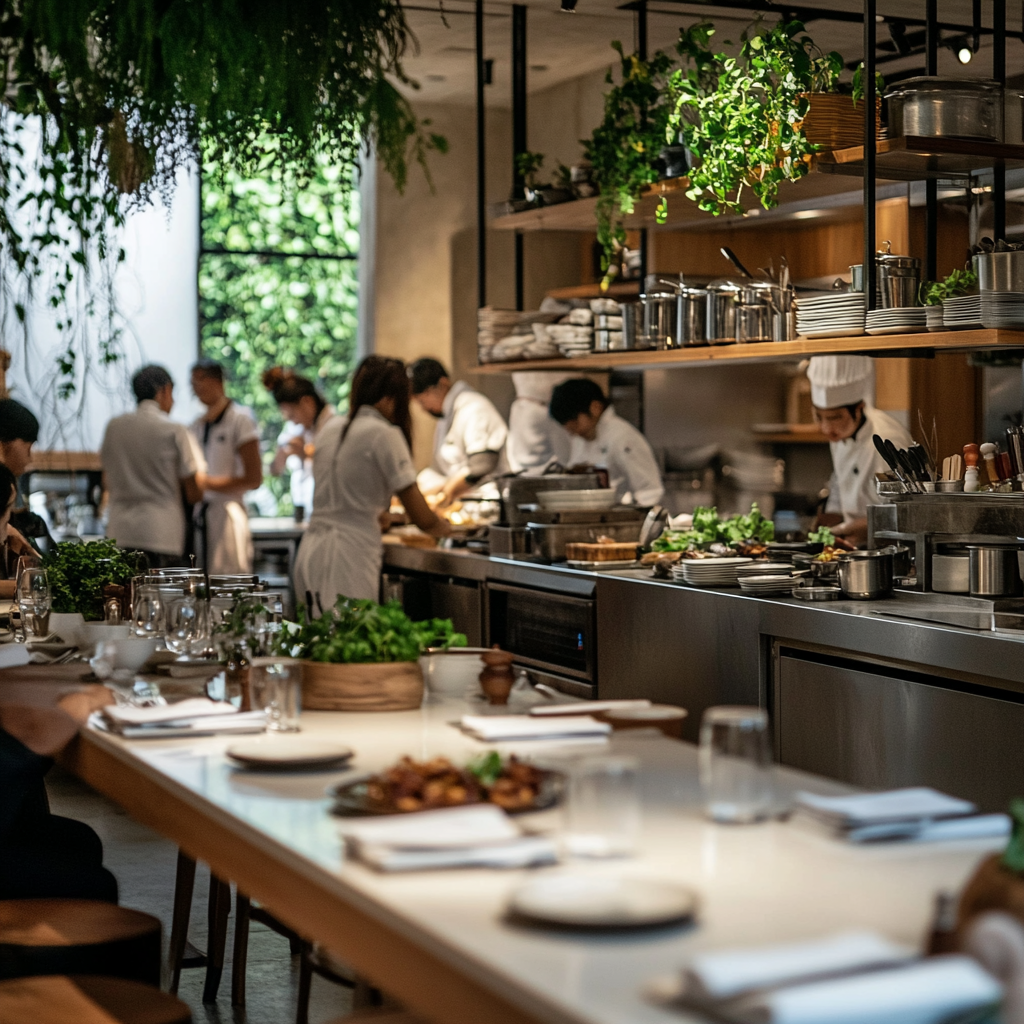2.1 Personal Hygiene Standards
2.1 Personal Hygiene Standards

You’re a chef working in a kitchen where people can actually see you cooking—it’s like being on a stage. Keeping yourself super clean and presentable isn’t just a rule; it’s a big deal. Here’s why:
Food Safety
If you don’t keep yourself clean, like washing your hands or wearing clean clothes, germs can get into the food. That can make people sick, and no chef wants that.
Guest Trust
When guests see you looking sharp and clean, they feel good about eating your food. They trust that you’re taking care of them, just like you’d trust someone who looks ready and responsible.
Professional Image
A clean, professional look shows people you take your job seriously. It’s not just about the food—it’s about showing respect for your craft and the people you’re serving.
In short, being clean isn’t just about hygiene—it’s part of being a chef people admire and trust. It’s like saying, “I’m proud of my work, and you’re going to love what I make for you.”
Dress Code and Grooming

Alright, let’s talk about why looking sharp and staying clean in the kitchen is a big deal—especially when people can see you cooking. Here’s how we do it:
Clean and Ironed Uniform
Start every shift in a fresh, neat uniform. It shows you’re ready to work and keeps things hygienic.
Hair Under Control
Tie up your hair or use a hat, cap, or hairnet. Nobody wants hair in their food—it’s gross and unprofessional.
Safe Shoes
Wear closed-toe, non-slip shoes. They keep your feet safe from hot spills and help you avoid slipping.
No Aprons in Certain Areas
Take off your apron if you leave the kitchen or use the restroom. It’s about keeping food areas super clean.
Accessories and Grooming Guidelines

No Jewelry
Don’t wear rings, bracelets, or watches (except a plain wedding band). They can trap dirt and bacteria, which isn’t safe around food.
Nails
Keep your nails short and clean. No nail polish or fake nails—they can chip or carry germs.
Personal Hygiene
Shower every day, keep yourself clean, and wear deodorant. Just skip the strong scents—no one wants their food smelling like your cologne.
Guest-Facing Appearance
When guests can see you cooking, your look matters. A spotless uniform and a clean, professional vibe tell them, “This chef knows their stuff and cares about the details.”
In short, your appearance isn’t just about looking good—it’s about showing pride in your job and making sure people trust you and your food.
Hand Hygiene

Alright, let’s talk about one of the most important things a chef needs to do—keeping your hands clean. It’s like your secret weapon for making safe, delicious food. Here’s the deal:
When to Wash Your Hands?
Before Starting Work
Think of it as resetting. Clean hands mean you’re ready to handle food the right way.
Before Touching Food
Especially for food people will eat right away, like salads or sandwiches. No germs allowed!
After Handling Raw Ingredients
Stuff like vegetables or plant-based proteins can have dirt or bacteria. Wash your hands before you touch anything else.
After Touching Your Face or Body
If you touch your hair, scratch your nose, or sneeze, germs get on your hands. Wash them before going back to cooking.
After Restroom Breaks or Cleaning
Using the restroom or dealing with trash or cleaning supplies? Always wash your hands after entering the kitchen, so the guest can see it. —it’s non-negotiable.
How to Wash Your Hands Like a Pro
Start with Warm Water and Soap
Get your hands wet, then add soap.
Scrub Everywhere for 20 Seconds
Follow the Hand wash Routine practiced with your supervisor. That means palms, between fingers, and even under your nails. A little extra effort here keeps food safe.
Rinse and Dry
Use clean water to rinse and dry with a towel or air dryer. No wet hands—they attract germs.
About Gloves
We don’t always use gloves, but when we do: Wash your hands before putting them on. If you switch tasks or gloves get torn or dirty, throw them out and start fresh.
So, keeping clean hands isn’t just a rule—it’s how you protect the food, your guests, and your reputation as a chef. It’s all about being safe and professional in the kitchen!
Health and Wellness

Alright, listen up! When you’re a chef, your health is just as important as your cooking skills. Here’s how to handle things if you’re feeling sick or get hurt:
Reporting Illness
Speak Up Right Away
If you’re not feeling well—like you have a fever, diarrhea, or vomiting—or if you’ve got an open wound, let your supervisor know immediately.
Stay Home If You’re Contagious:
If you have something that could spread to others, you can’t work until a doctor says it’s safe. Why? Because we don’t want to risk making anyone sick from the food we prepare.
Handling Cuts or Injuries
Cover It Up:
If you get a cut, clean it, and cover it with a waterproof bandage. If it’s on your hand, wear a glove over it too—nobody wants blood or germs near the food.
Change Bandages and Gloves Often:
Don’t let them get dirty or soggy. Keep everything fresh so you don’t accidentally contaminate the food.
The bottom line? Taking care of your health and covering injuries properly isn’t just about you—it’s about keeping the food safe and your kitchen running smoothly. A great chef knows that hygiene is part of the recipe for success!
Hygiene Practices in an Open Kitchen

Alright, imagine you’re in the kitchen and the guests can see everything you’re doing—like being on stage during a big performance. You’ve got to show them you’re a pro. Here’s how:
Avoiding Contamination Where Guests Can See You
Hands Off Your Face, Hair, and Body
No scratching your nose, fixing your hair, or wiping your face. Guests don’t want to see that—it’s not professional, and it can spread germs.
Use Utensils, Not Hands
Whenever possible, use tongs, spoons, or gloves to handle food. It looks cleaner, and it keeps the food safe.
No Eating, Drinking, or Chewing Gum
Don’t snack or chew gum where guests can see you. It looks sloppy and unhygienic, and it’s not what a professional does.
Showing Guests You Care About Hygiene:
Wipe Surfaces Regularly
Use a clean, damp cloth to keep counters and work-spaces spotless. When guests see you cleaning, it shows you’re serious about keeping things fresh.
Wash Your Hands Like You Mean It
Do it in a way that’s obvious—right where guests can see. When they watch you wash your hands properly, they’ll trust you’re doing things the right way.
The goal? Make everything you do in the kitchen show guests that their food is in good, clean hands. When you look like a pro, they’ll feel confident and impressed. That’s how you earn their trust—and their compliments!
Hygiene Audits and Accountability
Alright, team, let’s talk about how we stay sharp and clean every day in the kitchen. This is all about making sure we’re ready to serve guests safely and professionally. Here’s what we do:
Daily Self-Checks
Before you even start your shift, take a moment to check yourself
Is your uniform clean and neat?
Is your hair tied back?
Are your nails short and clean?
This quick check makes sure you’re ready to work like a pro from the start.
Peer Accountability
We’re a team, so we’ve got each other’s backs. If you notice someone forgetting something—like washing their hands or fixing their uniform—remind them politely. It’s not about calling them out; it’s about keeping the whole team looking and working its best.
Supervisor Inspections
Your supervisors will also check in regularly to make sure everyone’s following hygiene rules. These inspections aren’t about catching you off guard—they’re about keeping our standards high and our guests happy.
Why This Matters?

When we follow these hygiene rules
Guests stay safe and satisfied.
Our food is top-quality and trustworthy.
We look professional and make people proud to eat here.
So, take pride in yourself and your team. When we stick to these habits, we show everyone that this isn’t just any restaurant—it’s the real deal. Let’s keep it clean and keep it awesome!
There are no comments for now.